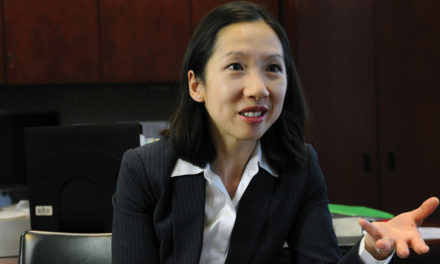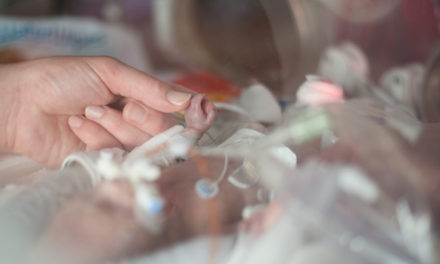Going into this year, supporters of physician-assisted suicide thought Hawaii was ripe for the picking. With good reason.
The state legislature is dominated by Democrats: The 51-member House has only five Republicans, while the Senate has none. Only 42 percent of the adult populace has any religious affiliation. Catholics make up 19 percent; Protestants, only 4 percent—slightly less numerous than those adhering to Eastern religions (5 percent).
Moreover, the groundwork had been laid for nearly two decades, ever since a panel appointed by then-Gov. Ben Cayetano issued a report in 1998 calling for physician-assisted suicide. That set the stage for ongoing efforts to legalize the practice, one of which came close to succeeding in 2002.
Last year, national groups like the ACLU and Compassion & Choices—formerly known as the Hemlock Society—made no secret of their intention to target Hawaii in 2017. So their opponents—like Hawaii Family Forum (HFF), a public-policy partner of Focus on the Family—knew what was coming.
“We went into the session preparing ourselves for a very big battle,” says HFF President Eva Andrade. “From our own internal polling of legislators, we knew they had the votes in both chambers. But we also knew that if this was going to be the year Hawaii passes assisted suicide, we were not going to go down without a fight. So we got together with our partners and went to work.”
As in other states, the resistance movement was a broad-based partnership of churches and religious groups, medical and legal professionals and people with disabilities. The coalition—Hawaii’s Partnership for Appropriate and Compassionate Care (HPACC)—included HFF, the Catholic Conference, St. Francis Medical Center and the Hawaii Nurses Association, among other groups and individuals.
Judging by early developments, resistance was futile. Senate Bill 1129, introduced in late January, empowered “attending providers”—physicians or even certain nurses—to write lethal drug prescriptions for patients who had a broadly defined terminal condition and had “voluntarily expressed a wish to die.” The measure moved easily through the Senate, passing nearly unanimously (22-3) on March 7, and was sent to the House of Representatives.
That could have been a morale-crushing vote for the opposition. It wasn’t.
“When we saw that Senate vote, we definitely knew it could become law,” Andrade says. “But not once did any of us lose hope and say, ‘Let’s not fight any more.’ It was quite the opposite. We all had this resolve: We said, ‘There’s no way we’ll let this happen.’ ”
Playing to Their Strengths
From the start, the HPACC team decided to let each of its participants do what they did best.
For the Catholic Conference, that meant taking advantage of their numbers. The Most Rev. Larry Silva, Bishop of the Diocese of Honolulu, wrote to the churches urging members to oppose SB 1129. They circulated petitions to that effect, gathering 12,000-13,000 signatures.
“We asked our people to write letters, sign petitions and call legislators,” says Walter Yoshimitsu, director of the Hawaii Catholic Conference. “And they did. They said, ‘This bill is not right; we’ve got to do something.’ ”
For others in the coalition, that meant drawing on their professional experience to influence legislators. “We had doctors coming out of the woodwork who were willing to testify in opposition,” Andrade says. “They were very concerned over this bill—and over the sheer speed with which this was happening.”
HPACC’s spokesman, Craig Nakatsuka, M.D.—a Honolulu internist formerly affiliated with Kaiser Permanente Moanalua Medical Center—had the same professional credibility. So did another of its active participants, Joy Yadao, R.N., a palliative-care nurse and former executive director of St. Francis Hospice and Palliative Care, the state’s largest accredited hospice.
For still others, it wasn’t professional experience they brought to the table, but life experience.
Chris Niemchyk, who was born with cerebral palsy, spent many hours at the Capitol lobbying against SB 1129, as well as appearing in an HPACC video ad. In his conversations with legislators, he stressed the impact legalized assisted suicide could have on people with disabilities—especially as health care costs create pressure to limit coverage.
“I see a two-tiered insurance system developing,” Niemchyk says. “That’s a point I hit over and over and over again. No matter what safeguards are on paper, I don’t see ‘voluntary’ choice staying voluntary.”
And for Andrade, doing what she does best meant working with lawmakers with whom she’s built constructive, trusting and respectful relationships over the years, despite disagreements on some issues.
“I got a call from one: ‘Hey Eva, can you help us find people to speak on a panel, so the hearing will be fair?’ ” she says. “He didn’t agree with us, but he was open with me about who’d be on the other side. That let me to find people from our side who could match them and go nose-to-nose.”
Open Minds
As it happened, that lawmaker wasn’t the only one who was interested in being fair. There were others who, while they were inclined to favor SB 1152, were willing to consider arguments against it. And some of them sat on the House Health Committee, which had to pass the bill before it could move on.
“There was a thorough examination in the House that didn’t happen in the Senate,” Andrade says. “The chair of the Health Committee, Della Au Belatti (D-Honolulu), supports ‘aid-in-dying’—she’d made that clear—but she’s an attorney, and she wanted to take a close look (at the legislation).”
Open minds were all the opening SB 1129’s opponents needed. As written testimony poured in from critics of the bill, committee members saw a host of problems with it. Their biggest concerns fell in two areas—one involving the young, the other involving the old.
Though mainlanders often see Hawaii as paradise, the state has a high rate of teen suicide, and lawmakers seemed moved by warnings about mixed messages.
“We’re asking our children not to commit suicide—to please, come to an adult, get some help, because your life is worth more than you think at this moment,” Yadao says. “We can’t say that to them, to people with mental illness or difficult circumstances, and at the same time say to those who are ill that it’s OK.”
Hawaii also has a high rate of elder abuse and exploitation. “People were and are very afraid that going down this road could hurt our elderly—our kupunas, as we call them. We don’t want them hurt, abandoned, subjected to abuse and coercion.”
That’s a special concern in a state with a large Asian population, Yadao notes. “It’s a cultural thing,” she says. “There can be the feeling not just of ‘I want to die,’ but ‘I have a duty to die and not be a burden on my family.’ ”
Adding to those worries, committee members heard concerns from well-regarded palliative-care specialists in the islands like Dr Rae Seitz.
“Rae’s always been rather liberal on this issue, believing it should be a choice for some people,” Yadao says. “But she knows firsthand the average physician is not equipped to have this in-depth conversation with patients and families.
“She said, basically, ‘We’re just not ready. We’ll get coercion. We’ll get doctors and families who don’t fully understand the issue convincing the patient that their life doesn’t have any more quality. That’s very dangerous.’ That testimony had a big impact.”
Those arguments, on top of various others about how the bill would work in practice, were adding up. And so were committee members’ doubts.
Decision Day
Nearly 100 opponents of SB 1129 were in the Capitol on March 23, wearing blue HPACC shirts with the message: “There’s no Aloha in suicide.” They’d come to deliver petitions against the bill. They’d also come bearing gifts for lawmakers: bags of Kalaupapa salt, named for a settlement which housed a leper colony where Catholic missionaries came to minister in the 1800s.
“We were looking for a way to bless them in a nice, Christian way,” Andrade says. “People here are very mindful of what happened back then, and how the faith-based community has a history of caring for the unwanted and the abandoned and the dying.”
The HPACC team had planned the March 23 event a couple weeks earlier. What they didn’t know until a couple days before it happened was that the House Health Committee would hold hearings on SB 1129—and act on the bill—on that same date.
So those who were at the Capitol made a point of watching the action while they were there. “By the time the hearing was to start, we filled the room,” Yoshimitsu says. “The other side only had a handful of people there.”
Good signs came quickly. At the start, Belatti told visitors that some of them would have cause for celebration, asking them to maintain decorum—a message clearly meant for the large HPACC crowd. And during the hearing, lawmakers peppered the bill’s backers with tough questions. “We knew things were shifting in our favor,” Andrade says.
Late that morning, Belatti made it official: She announced that this was “not the time to move the ‘aid in dying’ bill forward.” SB 1129 would be deferred—not technically dead, but effectively stymied for this year.
“I looked around the room and thought, ‘Many hands make light work,’ ” Andrade recalls. “I looked at all the people I knew personally who gave up their free time to educate legislators, to educate each other, to do social networking on this issue, to share videos. I felt very honored and blessed to work alongside them.”
Not that Andrade thinks she’s done working with them. She knows a future bill likely will come along purporting to have stronger safeguards, appealing to lawmakers who still support assisted suicide in theory.
“We’re going to have to do this again,” Andrade says. “We’ll have to show legislators that the safeguards can never be enough.
“We know we dodged a bullet. But we also know that something has changed for the better. Legislators are asking the right kind of questions now, looking at alternatives. They’re starting to pay attention to what we’re saying.”
For More Information:To keep up on issues affecting families in Hawaii, visit hawaiifamilyforum.org. To find material and updates focused on assisted suicide there, go to Hawaii’s Partnership for Appropriate and Compassionate Care at hpacc.org.
Drawing the Line in New Mexico
When Democrats took control of New Mexico’s legislature this year, their leaders made a point of pushing a bill to legalize physician-assisted suicide.
But when the Senate voted on that bill on March 15, it narrowly lost because a group of Democrats refused to follow their leaders.
In a 22-20 vote, seven Democrats—all but one of them Latino—joined 15 Republicans to defeat SB 252, AKA the End of Life Options Act. One Republican voted for it.
The background: In 2014, a state court ruled that New Mexico’s longstanding law against assisted suicide was unconstitutional. An appeals court, however, overturned that decision. And in June 2016, the New Mexico Supreme Court unanimously upheld the appellate court, declaring the issue a matter for elected officials.
That led to SB 252. Twice, it failed to advance in the Senate Judiciary Committee. Then the Chairman—Richard Martinez (D-Espanola), a Catholic—changed his vote, sending it to the floor, albeit with no recommendation on its passage.
“I was stunned and disappointed,” says Sen. Bill Sharer (R-Farmington). But when the bill got to the floor, Sharer adds, he got a pleasant surprise.
“Martinez spoke against the bill, talking about how he cared for his mother until she died,” Sharer recalls. “He said, ‘I was with her the whole time, and God decides when people die, not doctors. And while I let this come to the Senate floor, I did it so we could talk about my mom, and how she showed how dignified people live and die.’
“That was a show-stopper.”
The bill’s defeat left Sharer feeling encouraged.
“New Mexico has been moving in a secular, progressive direction, away from faith, for a number of years,” he says. “I think right here we drew the line and said, ‘That’s far enough.’ ”
Originally published in the August 2017 issue of Citizen magazine.






